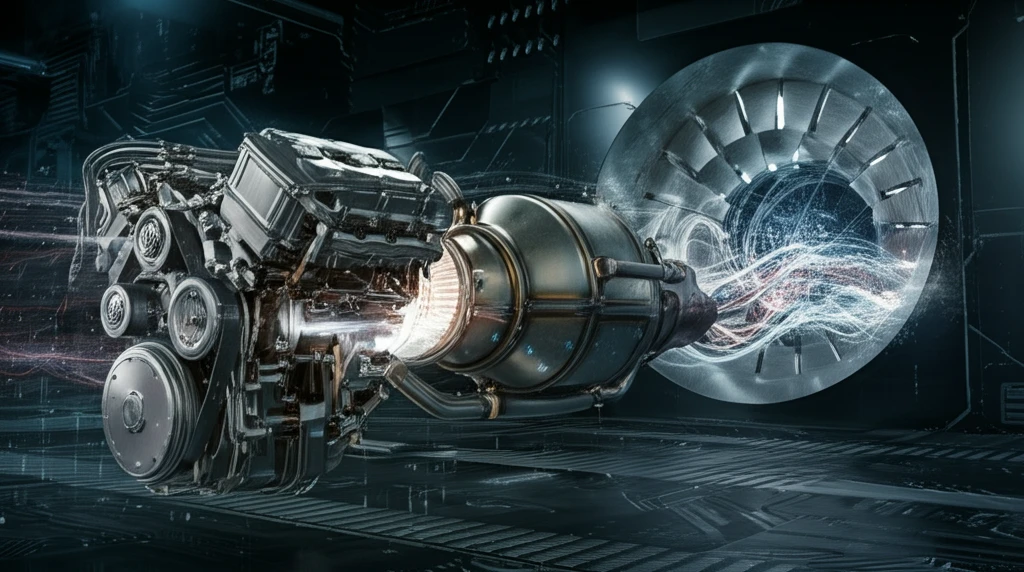
Is Your Car's Catalytic Converter Costing You Performance? Unveiling the Truth Behind Exhaust Flow
"Reverse engineering and CFD analysis reveal how catalytic converter design impacts engine efficiency and emissions, offering insights for better aftermarket choices."
In the quest for cleaner air, the automotive industry continuously strives to reduce harmful emissions. A key component in this effort is the catalytic converter, which transforms toxic gases into less harmful substances. However, this essential device can also impact engine performance, fuel consumption, and overall efficiency. Understanding the delicate balance between emissions control and engine output is crucial for both manufacturers and car enthusiasts.
The catalytic converter sits within a car's exhaust system, containing a honeycomb monolith structure with numerous parallel channels. These channels are coated with a washcoat, typically γ-Al2O3, which increases the surface area and acts as a carrier for precious metal catalysts like platinum, palladium, and rhodium (PGM). These catalysts facilitate chemical reactions that convert pollutants into less harmful compounds.
While catalytic converters are vital for reducing emissions, they also introduce resistance to the flow of exhaust gases. This resistance, known as backpressure, can negatively impact engine performance. A higher backpressure forces the engine to work harder, leading to reduced power output, increased fuel consumption, and potentially accelerated wear on engine components.
Deciphering Catalytic Converter Flow: What Factors Matter?

Researchers have investigated the intricate relationship between catalytic converter design and its impact on exhaust flow. Using a combination of experimental measurements and Computational Fluid Dynamics (CFD) simulations, they analyzed the performance of an original equipment manufacturer (OEM) catalytic converter and several aftermarket replacements. The goal was to identify designs that minimize backpressure while maintaining effective emissions control.
- Monolith Geometry: The length and diameter of the monolith, as well as the density of channels (cells per square inch), all play a significant role in determining flow resistance.
- Precious Metal Loading: The amount and composition of precious metals (PGM) used in the catalyst coating can also affect flow characteristics.
- Wall Thickness: The thickness of the channel walls within the monolith influences the overall porosity and flow dynamics.
Choosing the Right Converter: Balancing Performance and Emissions
The research findings highlight the importance of carefully considering catalytic converter design when selecting aftermarket replacements. While all catalytic converters are designed to reduce emissions, their impact on engine performance can vary significantly. By understanding the factors that influence exhaust flow, car owners can make informed decisions to optimize both emissions control and engine efficiency. This involves looking for designs that minimize backpressure without sacrificing catalytic activity.
